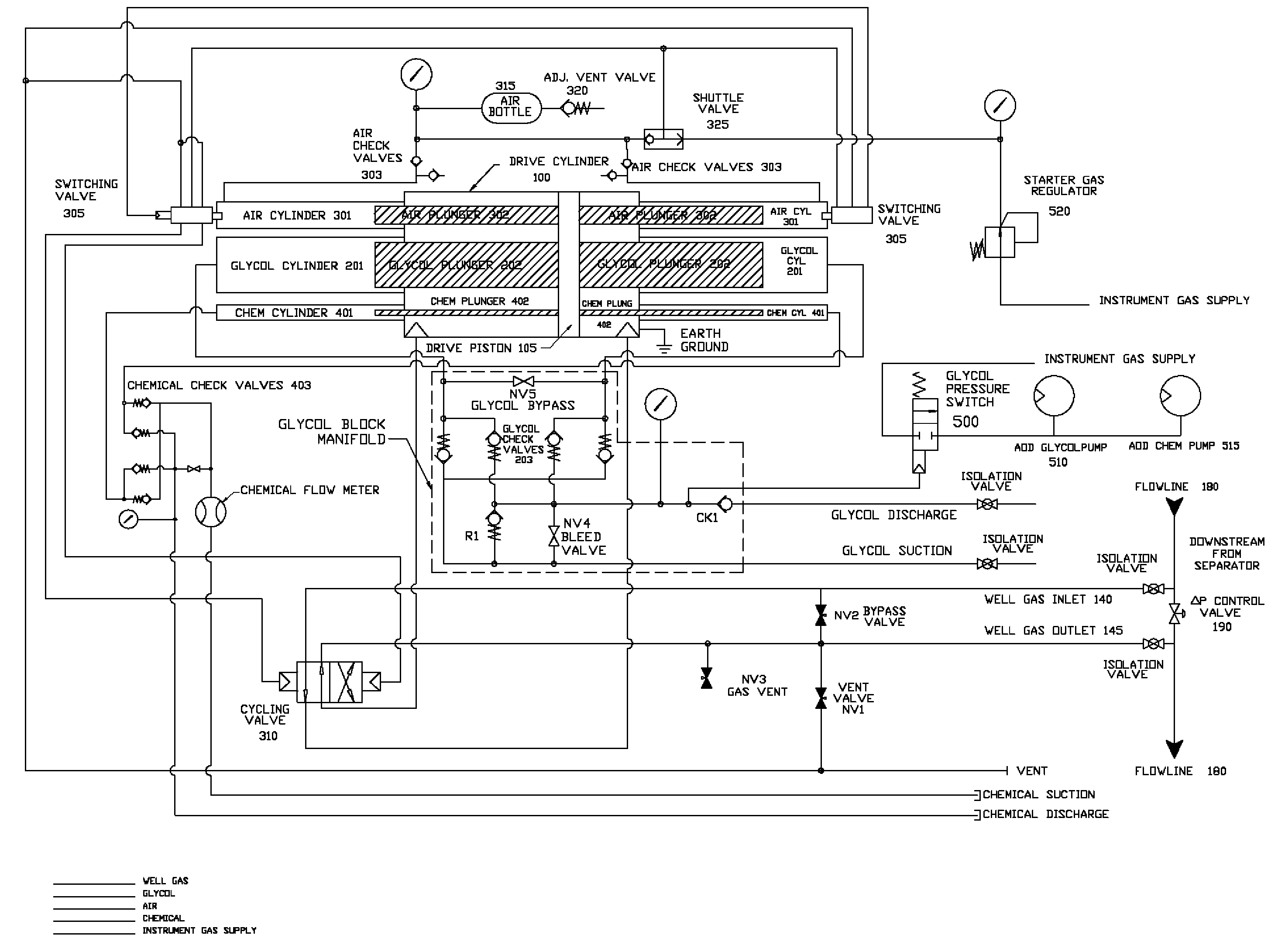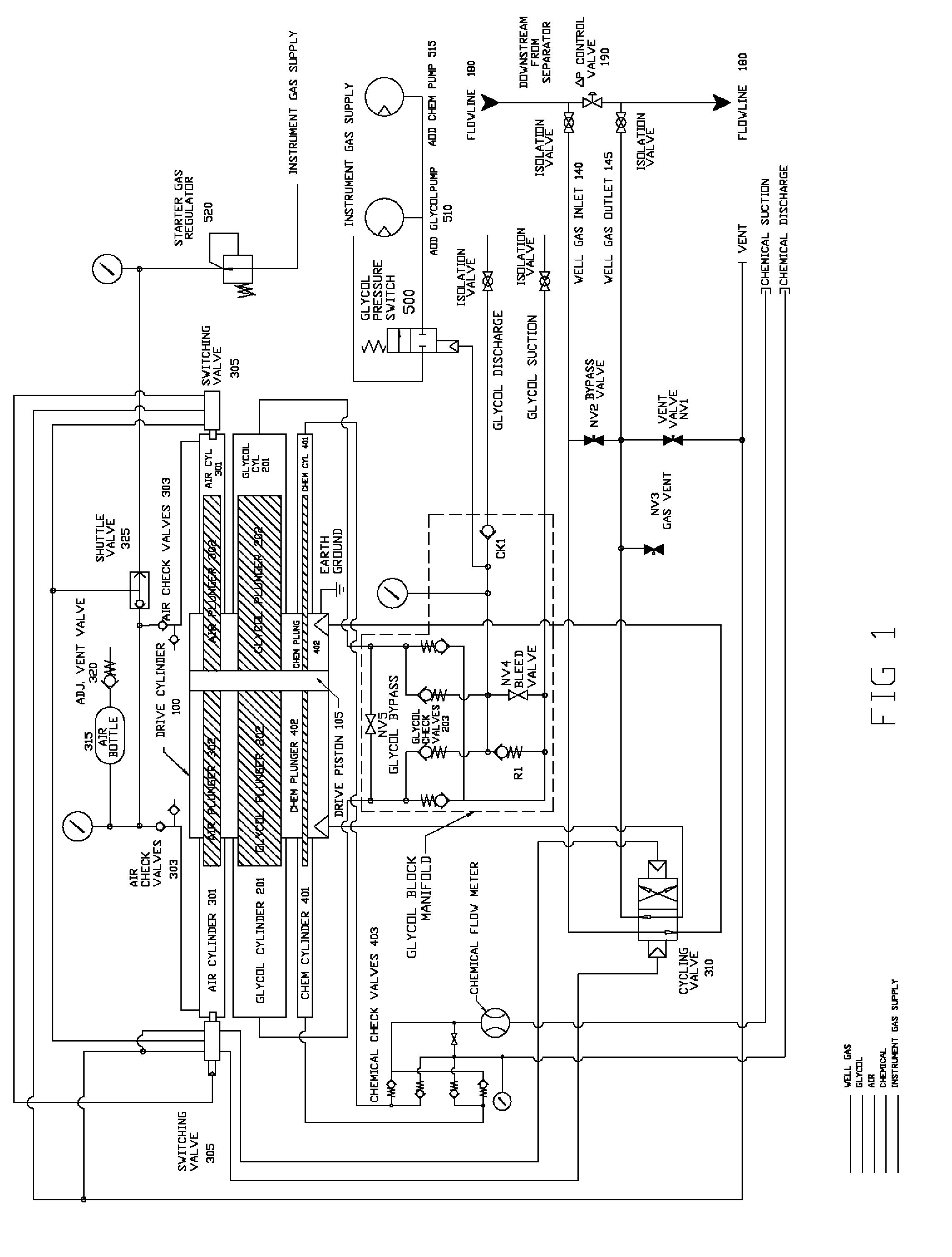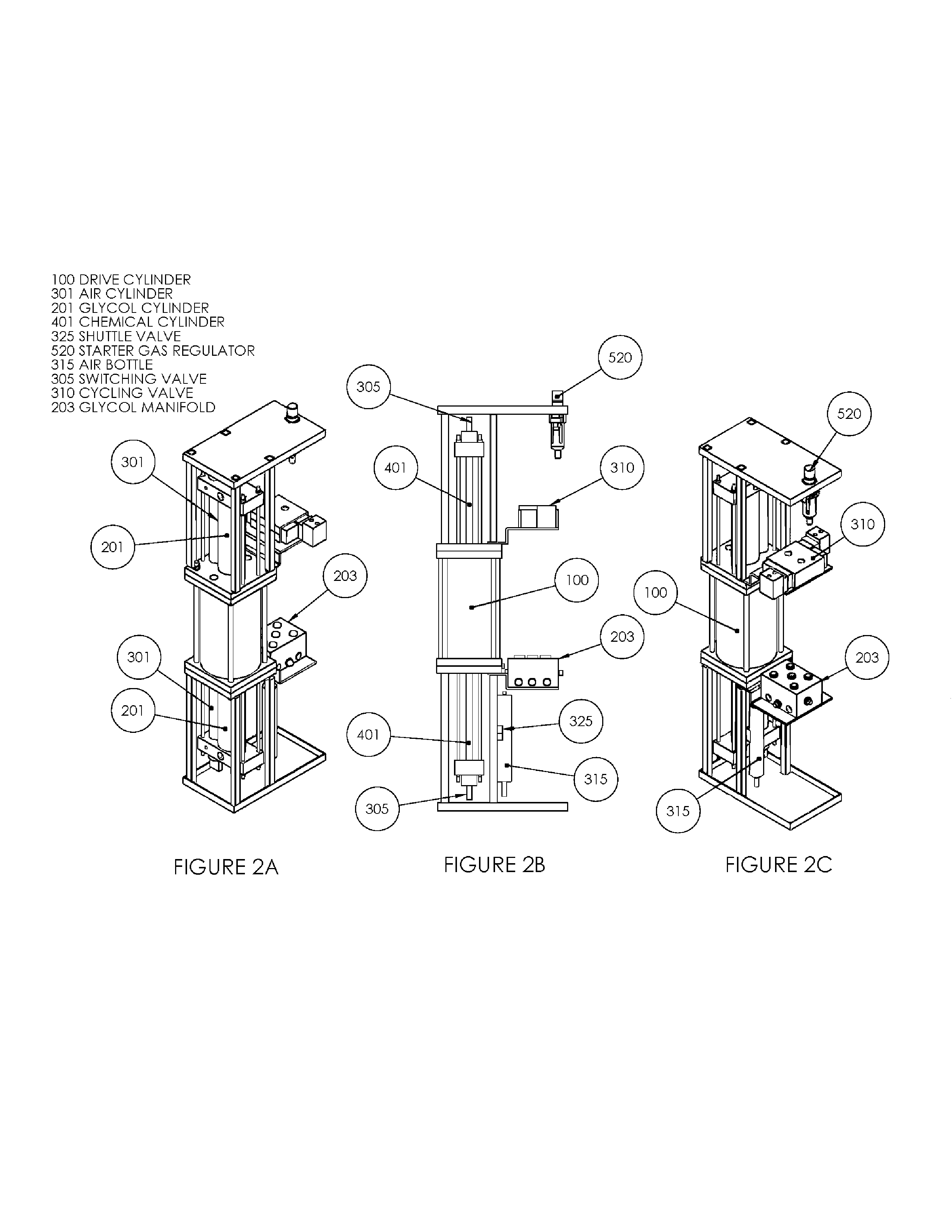Since this low-pressure gas cannot be returned to the high-pressure gas flow line, this low-pressure gas is exhausted to the
atmosphere, thereby causing
pollution and simultaneously
wasting valuable gas.
However, as is well known in the art, there are inherent problems associated with using a ventless gas drive apparatus connected to external reciprocating pumps at remote, infrequently-attended natural gas well sites where the equipment must operate continuously, i.e., operate 24 hours per day, every day of the year.
It is also not unusual for natural gas wells to be located in adverse and even in harsh environments.
Unfortunately, commercially-available reciprocating pumps require frequent maintenance to enable ongoing operation.
In particular, such reciprocating pumps require periodic packing adjustment and concomitant
lubrication-service.
Reciprocating pumps are notoriously prone to both packing and seal leakage, and, therefore, in order to accommodate continual operation in the field, reciprocating pumps must be augmented with elaborate leakage-drain systems.
But, ironically, while being implemented to promote continual operation of gas-driven reciprocating pumps, such elaborate leakage-drain systems, per se, require constant monitoring and maintenance.
Another limiting issue of ventless drive apparatus known to practitioners in the art is that the drive unit has a predefined
stroke-length.
This tends to limit the pumping range available from a driven external
reciprocating pump which normally has a variable
stroke-length.
It should be evident that this situation complicates coordination of simultaneous operation of the two external pumps.
For instance, for the instant exemplary field application, it is difficult for an operator to optimally set the pumping requirements simultaneously for both external pumps.
This daunting challenge may compel an operator to run the external pumps at suboptimal settings.
It should be apparent that these maintenance and design issues tend to severely militate against practical application of such pumping systems at remote well sites that are only rarely scheduled to be serviced by operating personnel and that are dispersed over a wide geographical area, often in adverse and even harsh environments.
As is common knowledge in the art, there are often hundreds of wells in a gas field, with frequent maintenance being neither practicable nor affordable.
Moreover, in view of contemporary environmental regulations, pumping operations which are characterized by chronic seal and packing leakage problems—resulting in emissions of contaminants, including well gas, glycol,
methanol,
corrosion inhibitor, etc., into the environment is unacceptable and may be unlawful.
One of the significant drawbacks and disadvantages of the prior art exemplified by Paval and Grimes is that such embodiments of ventless gas drive apparatus are stand-alone drive units interconnected with external reciprocating pumps via a
piston rod.
Accordingly, embodiments of this art are susceptible to the hereinbefore elucidated operational problems and limitations.
Another significant drawback and
disadvantage of the Paval and Grimes ventless gas drive units is that both prior art pump systems invoke spaced-apart circumferential
piston seals to prevent flow of gas between the two ends of the drive cylinder.
The high
differential pressure acting across the seals causes high frictional forces which, in turn, reduces available
power output from the drive and induces faster seal wear than if the pressure differential were significantly lower.
However, the differential
shuttle valve system contained within the piston of the Paval drive introduces considerable complexity to the piston
assembly which ramifies not only as higher cost, but also as more recurring maintenance.
The small apertures and small passageways and
moving parts of the prior art
shuttle valve system are highly prone to becoming plugged and stuck under these conditions.
Since the Paval
shuttle valve system can be cleaned out and repaired only by taking the complete drive out of service, the Paval shuttle valve methodology therefore inflicts yet another level of maintenance concerns that militates against uninterrupted pumping operation at gas wells in the field.
Often the pumping system will be located downstream from a gas-liquid separator and / or filter but, as is well known in the industry, some liquids and fine solids still often bypass these devices and therefore flow through the pumping system.
The small apertures and small passageways and
moving parts associated with the end-of-stroke switching and
cycling control valves are highly prone to plugging up and sticking under these conditions.
This prior art method of controlling the end-of-stroke switching and
cycling of the drive unit therefore introduces still another maintenance issue to an already saturated, onerous maintenance
scenario as hereinbefore described.
Such prior art pumping technology suffers from inherent operational and maintenance problems as hereinbefore described.
 Login to View More
Login to View More  Login to View More
Login to View More 


